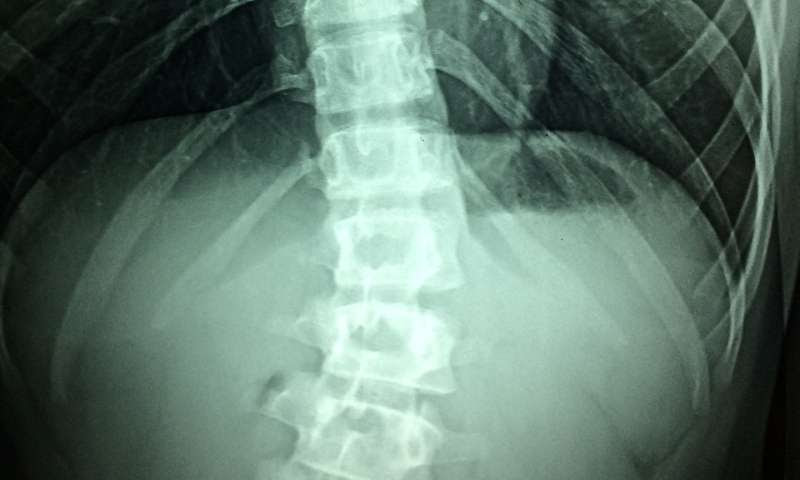by Justin Jackson , Medical Xpress

Credit: CC0 Public Domain
A research collaboration led by the University of Chinese Academy of Sciences, China, investigated the role of CHIT1, a protein associated with microglia, in aging.
In a paper, “CHIT1-positive microglia drive motor neuron aging in the primate spinal cord,” published in Nature, the group identifies distinct states of microglia in the aged spinal cord associated with aging-related changes. It links their presence to senescence in motor neurons and proposes the enzyme CHIT1 as a potential biomarker for aging.
The researchers used various techniques, including droplet-based microfluidic technology and single-cell tagged reverse transcription sequencing, to analyze gene expression in different cell types in the spinal cord.
In vivo experiments involving CHIT1 treatment in monkeys and mice demonstrate compromised motor neuron conduction and physical activity decline. The researchers observed that CHIT1+ microglia are not present in the spinal cords of mice, indicating a primate-specific phenomenon.
A previously unreported neurotoxic microglial state was identified, marked by elevated expression of CHIT1 specific to aged spinal cords in both primate and human biopsies. The team labeled the state “aging-induced motor neuron toxic CHIT1-positive microglia (AIMoN-CPM).” CHIT1-positive microglia were found to preferentially localize around motor neurons, with elevated levels observed in the cerebrospinal fluid and serum of aged monkeys and elderly individuals.
The finding implies that the identified microglial subset and its association with motor neuron senescence could be a potential target for therapeutic interventions to combat spinal cord aging. The researchers propose possible strategies, including blocking CHIT1 neurotoxicity with antibodies, using existing transforming growth factor-beta receptor inhibitors and treating with protective compounds like ascorbic acid (vitamin C).
The authors conclude that CHIT1+ microglia represent a key player in age-related spinal cord degeneration, contributing to motor neuron senescence. More research is needed to determine if the vulnerability of motor neurons in the aging process can be countered with therapeutic interventions to counteract the CHIT1-induced effects in hopes of delaying spinal cord aging.
More information: Shuhui Sun et al, CHIT1-positive microglia drive motor neuron aging in the primate spinal cord, Nature (2023). DOI: 10.1038/s41586-023-06783-1
Journal information: Nature
© 2023 Science X Network

Leave a Reply